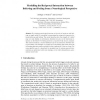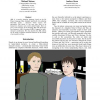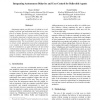578 search results - page 2 / 116 » Believability and Interaction in Virtual Worlds |
BRAIN
2009
Springer
14 years 2 months ago
2009
Springer
Abstract. By adopting neurological theories on the role of emotions and feelings, an agent model is introduced incorporating the reciprocal interaction between believing and feelin...
MMM
2003
Springer
14 years 21 days ago
2003
Springer
Virtual Worlds are computer-hosted visual environments that create the effect of an interactive three-dimensional world in which objects have a sense of spatial and physical prese...
ATAL
2008
Springer
13 years 9 months ago
2008
Springer
Modeling synthetic characters which interact with objects in dynamic virtual worlds is important when we want the agents to act in an autonomous and non-preplanned way. Such inter...
EXPERT
2002
13 years 7 months ago
2002
ABL is a reactive planning language, based on the Oz Project language Hap, designed specifically for authoring believable agents - characters which express rich personality, and w...
ATAL
2004
Springer
14 years 25 days ago
2004
Springer
Autonomous agents can help users by taking on a substantial workload, and performing tasks that are too complex for a human. However, in some systems complete autonomy is undesira...



